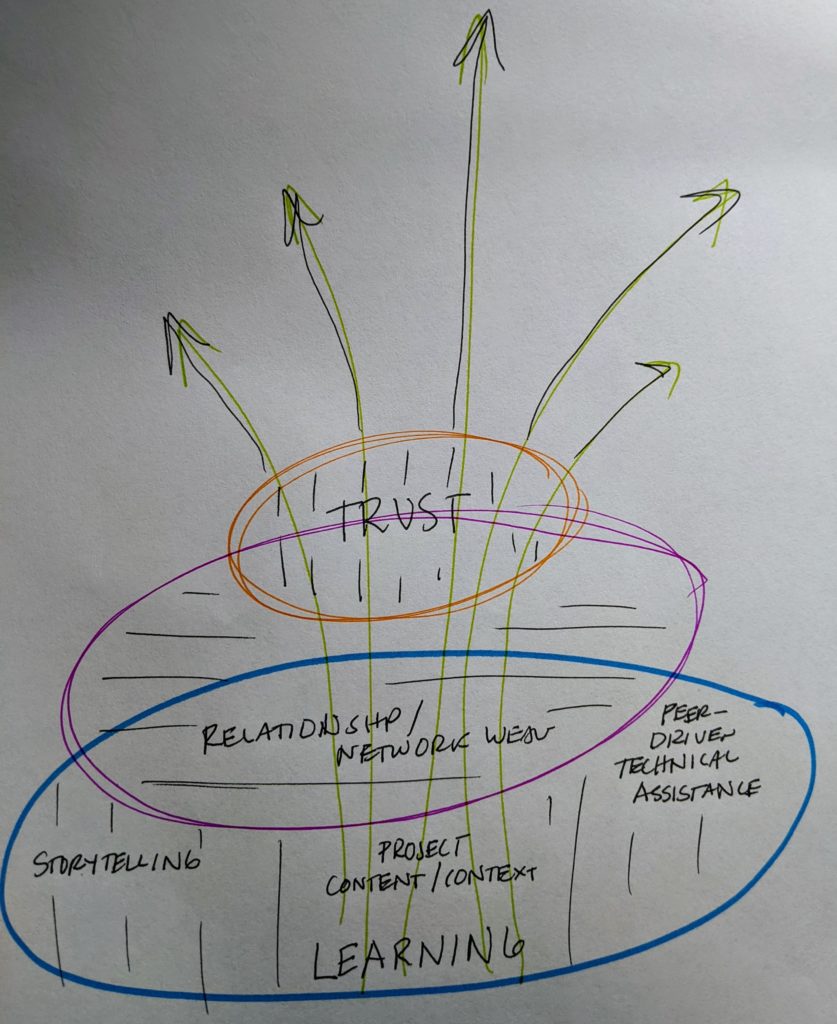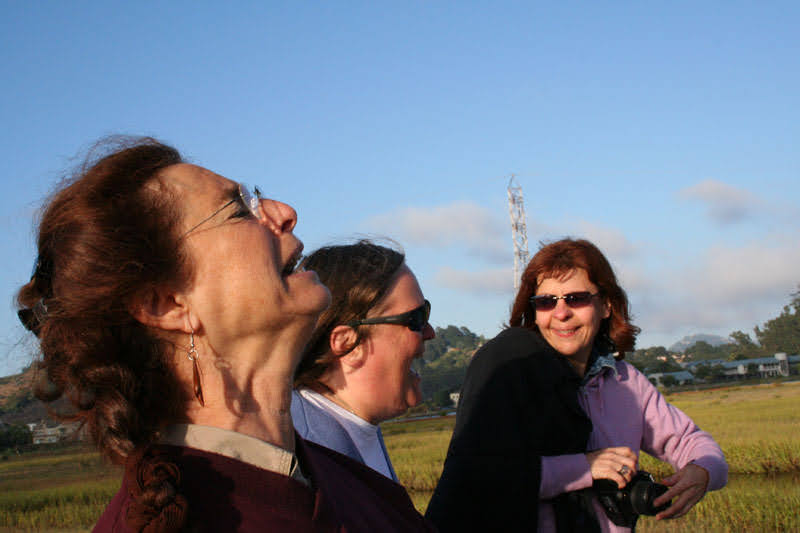Nuance is everything. I saw a very sweet 2×2 from Amy Edmondson while I was taking one of my rare peeks at Twitter. At first glance my reaction was “cool!”
Then the term psychological safety caught my eye because I have been wary of the term. Safety on whose terms? For whom? I have become cautious as I’ve increasingly realized that I have projected my sense of safety on others who have NOT experienced psychological safety at all in the “shared context.”
Here is the tweet, then some comments below.
Amy, I have penned this without reaching out to you to talk about it. If that would be helpful in any way, let me know. I understand that psychological safety is a core of your work, and that my knowledge in this area is experiential and probably peripheral. I have learned a lot from your work over the years. The observations and wonderings I offer here are mostly directed at myself along my learning path.
Sweet…and important to note the lack of nuance, especially when issues of race, culture, gender, disabilities are factored in. 2x2s are just a jump off point… https://t.co/L1CsFveFJ2
— Nancy White (@NancyWhite) April 4, 2022
What I appreciated about Amy’s post is the recognition that learning (or doing, etc.) require us to being open to being challenged, that we need positive, creative abrasion to bring our best to a challenge. It was what she proposed as supporting that state that left me uneasy: the idea of lowering standards, and the perceptions (reality) of being wrapped in cotton wool. The words “apathy,” “anxiety” and “comfort” taking on what sort of judgement? Whose standards are we talking about? Whose perception of who is getting wrapped in cotton wool?
What in this 2X2 honors the individual humans, their identities, as well as the output of a team? What helps the group reveal what is working and what must change to get to “learning.” What values and lived experiences are behind the generalizations?
I am bothered that apathy is the term for “showing up with our hearts and minds elsewhere, choosing self protection over exertion.” At some point, how much do you ignore and when do you choose to self-protect? How is, for example, self protection against racism, ableism and sexism evidence of low performance standards? How much is this the individuals lack of psychological safety and how much is it evidence of an oppressive system? How are self- protection and exertion actually related?
If this were a self reflection tool, a nuance might be “how am I protecting myself through disengagement?” What is causing my disengagement? Who is causing it? What power do I have to change it? Example: how does this land for a woman of color in a male dominated tech meeting who is constantly disrespected or ignored. For a person in the room who is the only person doing primary care giving for a loved one and has a lot on both work and home lines and may appear distracted? For the person with no power in the group? For some, this may be the ongoing experience of white supremacy.
I realize here I may be conflating apathy with anxiety. Thus the simplification continues to break down my understanding… Who knows when most perceived apathy is actually expression of anxiety?
Then to Comfort Zone – what if this was Respect Zone? If we had sufficient understanding of ourselves and each other, then challenging the ideas going into the work or learning itself can be experienced in the space where assumptions about the individual are not subtext for the presence or absence of respect.
So how does the 2×2 help us understand and best choose our approaches and actions? How does it move beyond stereotype or generalization? NUANCE!
If the use of the 2×2 is a reflection by a manager on a member of the team or of the team as a whole, it could feel like judgement, unconscious or conscious bias or even harassment to team members. Or it could be the starting point of asking a new type of question to learn more, understand more deeply rather than judge about people’s experiences and behaviors.
If this is a starting point to reflect as a team about how we all can show up and explore what changes might be useful to the group, how do we do it without perpetuating more oppression and misunderstanding along the way? And if it is for the latter, how could the quadrants be more generative and less judgmental?
Even as I write this I think, whoa, there is so much going on here. How would I represent it in a different way? If we all stood on the same ground, we were homogeneous, shared values (and probably biases), it probably could be done. But in the diverse world we live in, a 2×2 won’t do it.
We could reexamine it from a different 2×2 approach like “Critical Uncertainties” and look at a pair of variables that are important to our work/learning and are out of our direct control. Then we could see what options we could take to get to the “Learning Quadrant” depending on how those variables played out. We would expose our assumptions and uncertainties rather than judge and compartmentalize. I am sketching something now to see if this idea might bear fruit. (Future post! Right now I’m still brainstorming the uncertainties)
So far I have been throwing my own wild generalizations. Probably not helpful. Eugene Eric Kim replied to my Tweet asking for an example of nuance that gets lost in this type of matrix. Good ask, Eugene, as always. Here goes. And I have not written here in my blog about working on my own racism and white supremacy, but that work informs this post – and I recognize I’m still learning and may not get this “right.” I also recognize I can take that risk. Ironic.
As a person who has in the past unconsciously facilitated the loss of nuance, particularly in terms of my privilege as a white person in the US (and even abroad), I will give an example on myself.
I prioritized my world view as a feminist and offered a suggestion to a woman of color with whom I was cofacilitating. We were talking about how men often ignored what women said in meetings. I suggested that mixing high status language with low status body language helped to get men to pay attention to the issue I was putting on the table, instead of being ignored. Some of this was classic self-effacement moves, use of humor to put the men at ease rather than feel intimidated by me.
Turns out this mixing of high/low status is a classic move in the Improv world. Turns out I have been unconsciously using this much of my professional life. AND it turns out it doesn’t work for everyone, particularly if they are the “other” in the room. What creates psychological safety for me may not for you.
My co-facilitator immediately shared that if she used the status mix, she would lose even more credibility as a woman of color. How she talked, how she dressed –everything was always being judged through the lens of the (mostly white) men in the room. So taking a risk with this mixed status approach could actually lower her status. This is not psychological safety from any point of view. While my use of it may launch me into that mythical upper right quadrant of the matrix, Learning, it may move someone else to feeling apathy or anxiety. My using such an approach as a facilitator, let alone as a participant, can (and has) done damage. What worked great for me, didn’t work for her. (By the way, this was a startlingly wonderful learning moment that came from my colleagues generosity and I still feel it cost her a lot to even engage with me about it that has NOTHING to do with apathy or anxiety. My learning cost her labor.)
The nuance of how we understand these quadrants, these words, let alone what psychological safety means and feels like for people different from us, is essential. Boiling it down looks cool. But without nuance, it could be damaging. (Just look at the figured in the image. They might be perceived as white males…)



